Homegrown: Georgia's first leases for oyster farms hit the water
Georgia is at the precipice of a renaissance for its once great coastal industry: oysters.
Only a handful of the oysters consumers eat on the 100-mile Georgia coast are locally grown. But that number is set to rise as the first handful of oyster aquaculture operations — maritime farms for the mollusks — put out their crop thanks to that state's first-ever mariculture leases.
Although Georgia once led the nation in wild harvests of oysters, there haven't been commercial farms for the livestock until now. Whether they're new to the industry or have decades of experience with similar products like clams, the growers snapping up the coveted state leases for oyster farms are the first of a new era in Georgia food production.
Fisheries management: Bass anglers in Georgia might be surprised to learn where their catch originated
What's in the water? Mapping to monitor: how invasive species spread during Georgia floods
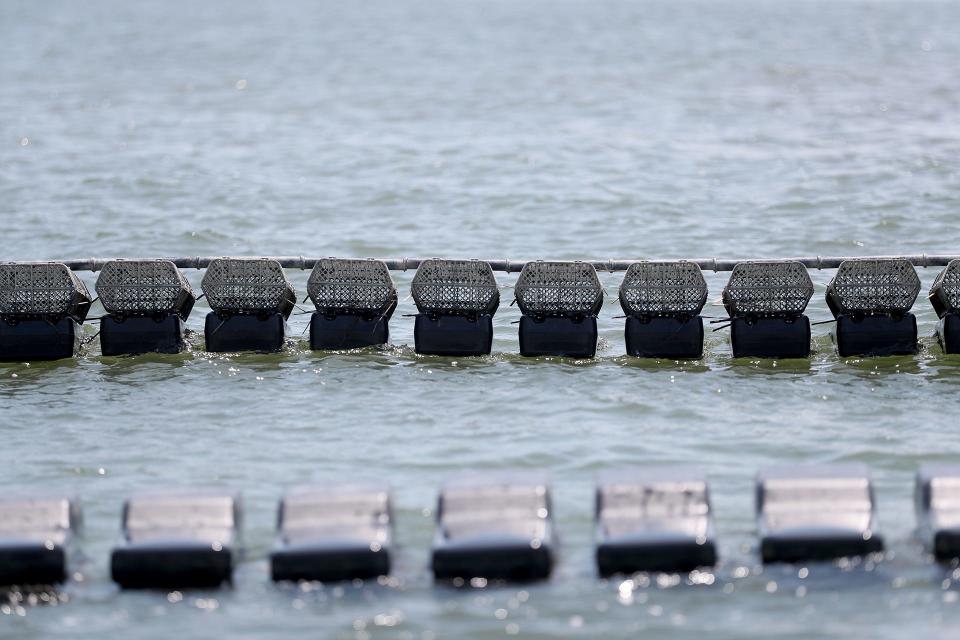
Farming without many inputs
Perry and Laura Solomon own Tybee Oyster Company, the first floating oyster farm in Georgia. They are one of the winners of the state's lease lottery which took into account eight criteria and weighted them, for example, years of experience in aquaculture, years of residency in Georgia, evidence of funding and more.
In the last two months, they set out their first batches of oysters into the waters of the Bull River.

Out on their boat, they pass cement pillars declaring a "mariculture zone" and stop next to two long threads of black baskets bobbing in the current. Their lease is a tract of water off the marsh in Chatham County where they have installed two rows of connected baskets as well as floating platforms with equipment to pull and lift the strings of baskets up to assess and handle the oysters.
The Solomons use a semiautomated method called "FlipFarming" that was created in New Zealand. It's the most automated way to date to farm oysters and flip the baskets to sun them and help protect against fouling ― the dirtying of the equipment and oysters by barnacles, algae and other natural forces.
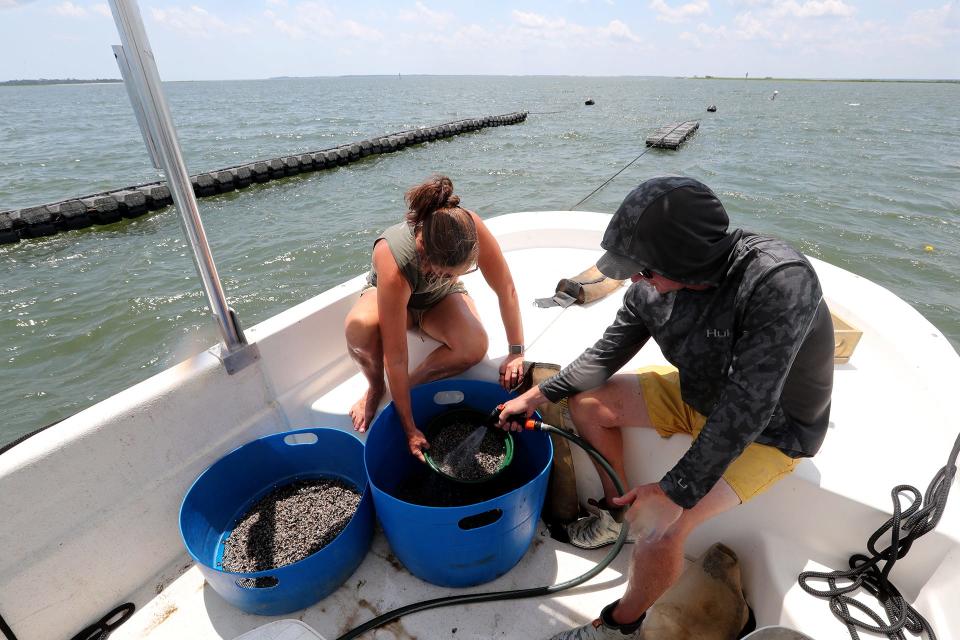
Flipfarming still requires plenty of manual labor as the Solomons haul out bags of oysters and sieve them through strainers to separate the different growing sizes, hose them down and scrub barnacles and fouling off the baskets and more.
Laura and Perry say that oyster farming is a "win-win" scenario: It is good for the environment and good for Georgians, too. Oysters are filter feeders, natural water cleaners that also help add structure to shorelines along the coast. By farming, Laura said they aren't taking any oysters away from the natural environment and are helping clean the water with their own crop, which can also spawn more oysters out into the water.
For humans, the oysters are fresher and require less trucking and refrigeration. Once harvested, oysters must be kept below 40 degrees Fahrenheit and aren't shucked until served at a restaurant.
All the Georgia oyster producers grow a native species of oyster that's produced locally by the University of Georgia Marine Extension and Sea Grant's Shellfish Research Laboratory. They purchased about 100,000 "seed," or baby oysters, from the extension that arrived in two batches in June and July.
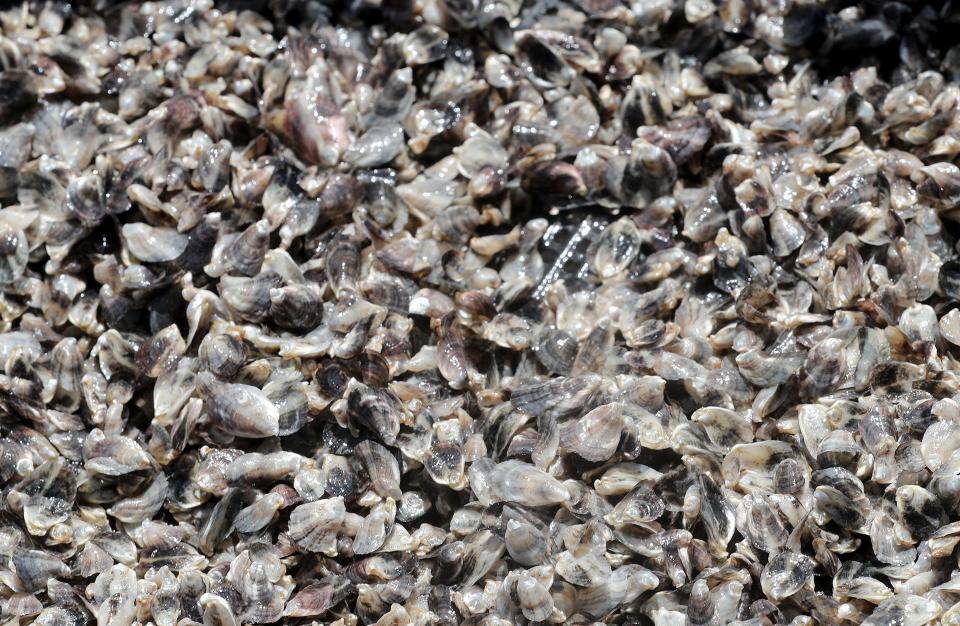
Those 100,000 seed oysters fit into a quart-sized plastic container. In the weeks since their arrival, some have already grown so big they're nearing market size in length. However, Perry said they'll need many more months to grow firmer shells and reach the bigger, quality meat expected on the market. The average time it takes an oyster to reach market size is nine to 12 months.
Oyster farmers don't have to feed their oysters to plump them up, nor do they employ any other inputs that terrestrial agriculture uses such as fertilizers or antibiotics. Perry said that since the oysters are floating rather than in the mud, their product barely even needs to be rinsed off coming out of the water because the current does it for them.
"You're tasting the place of where they're from," Perry said. The oysters take on the distinct salinity and flavor of their ecosystem, making a Tybee oyster entirely different from one raised anywhere else.
The mariculture zone in Chatham County is one of two in Georgia: The other is located in the Mud River behind Sapelo Island. The Solomons' lease is sandwiched between two other leases, but neither of those tenants has received their permits or started operations yet.
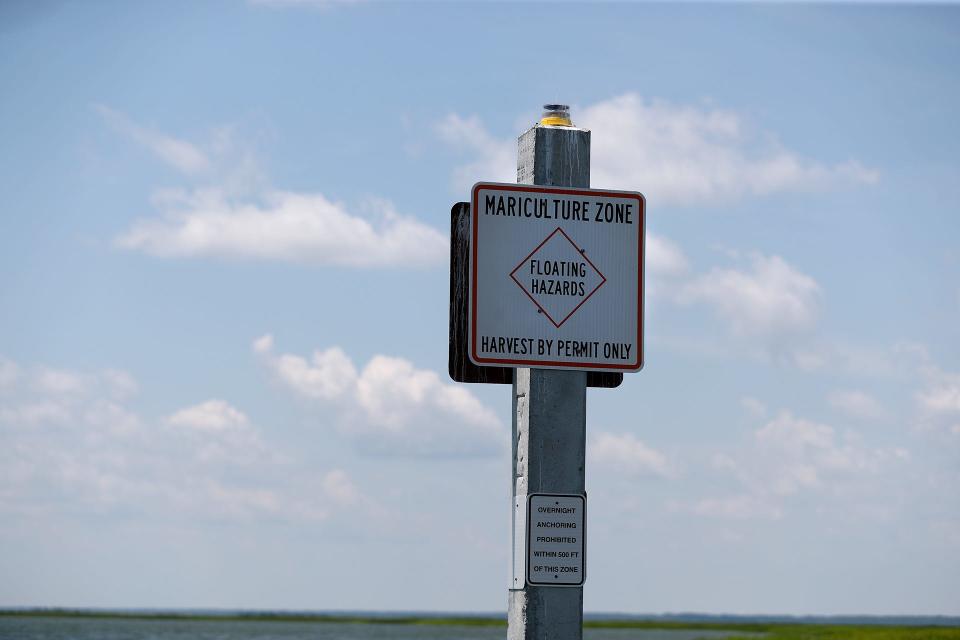
Barriers to business
Both the Solomons are trained engineers and would describe themselves as analytical and methodical. When it comes to being the first to flipfarm in Georgia, Laura said being the first might have something to do with a naturally competitive spirit.
"You need to have a stomach for risk," Perry said.
Both Perry and Laura have day jobs and multiple kids, on top of running their new business. This time of year, they say they are on-site daily early in the morning to beat the heat. But they're looking forward to the oysters growing and connecting with local restaurants and businesses to sell their product right where it came from.
He said he's heard estimates from industry experts that it takes probably around $100,000 minimum just to get an oyster farming operation started.
And that's assuming you already have a boat.
Laura said that number is likely higher since a barrier to starting for them was that they had to pay for the lease and continue paying for the water for two years while waiting for permits to be approved. It was a big time and money commitment while the business wasn't producing yet.
"It took us a year and a half to get permitted," Laura said, "in which time you're paying on the lease." She and Perry said the permitting process through the Army Corps of Engineers has held up many of the leaseholders from proceeding.
The U.S. Army Corps of Engineers (USACE) Savannah District submitted a statement to the Savannah Morning News stating that there is no standard time for this process in large part because these are the first permits of their kind.
"In 2018, we determined none of the existing shellfish farming operations (1,492 acres) had been permitted by the Army Corps under Section 10 of the Rivers and Harbor Act or Section 404 of the Clean Water Act and we began working with [Coastal Resources Division] to bring these existing operations into compliance," USACE spokesperson Cheri Dragos-Pritchard wrote.
Shortly thereafter, Dragos-Pritchard said, the state codified a process for certifying shellfish hatcheries and nurseries, which took effect on March 1, 2020. Since then, USACE, the Georgia Department of Natural Resources Coastal Resources Division and shellfish growers have been working to issue the required federal authorizations. From June 2021 to present, the Savannah District has received 30 individual applications for activities associated with shellfish farm operations.
Dragos-Pritchard said that many of the applications have been modified over time, as the state and the applicants were not familiar with some of the information they needed to provide as part of these applications, which has added time to the process.
As of now, approximately nine of these applications have been authorized and another 21 are still being processed. Of note, none of the existing shellfish farms have been required to cease operations or remove any gear.
Early oyster consumers: UGA archeologists' coastal research sheds light on native populations 4,500 years ago
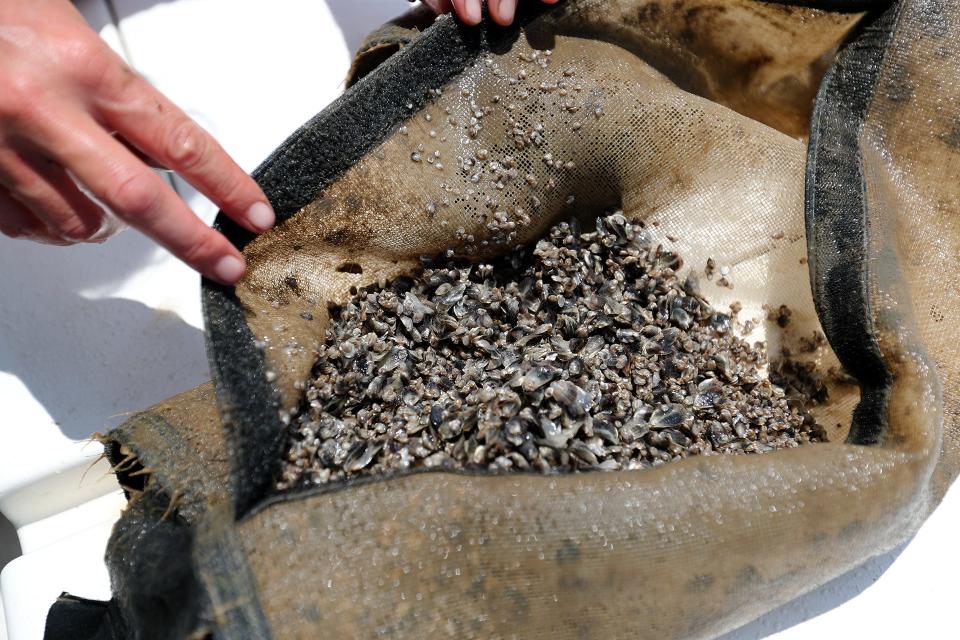
Hatching new leases on an old industry
According to the CDR, Georgia led the country in oyster harvests at the turn of the 20th century, harvesting 8 million pounds annually. Those were mostly tinned oysters since Georgia's naturally craggy, clustered oysters weren't prime for oysters on the half-shell. But by the 1930s, overharvesting hit the industry. Later into the 1900s, tastes changed, and interest for tinned oysters yielded to oysters on the half-shell, thus ending Georgia's heyday.
Tom Bliss, director of the University of Georgia’s Shellfish Research Laboratory at the UGA Marine Extension and Sea Grant in Savannah, said the lab helped lay the groundwork for the budding oyster industry when it received a grant from the Georgia DNR in 2014 to start an oyster hatchery.
"We can only aquaculture species here that are native species," Bliss said. "If we have a really healthy female, she'll produce in the neighborhood of five to 10 million eggs at one spot."
He said that the hatchery retains about 10% of what they put in, not because they all die but because the lab culls the slow-growing oysters. Since they are making oysters for producers in the consumer market, consistent quality is important.
Now, the lab has worked to spawn millions of little oysters looking to provide good stock for local farmers. But before that, state law had to change. Up until 2020, Bliss said Georgia was operating under rules and regulations that were written in 1981.
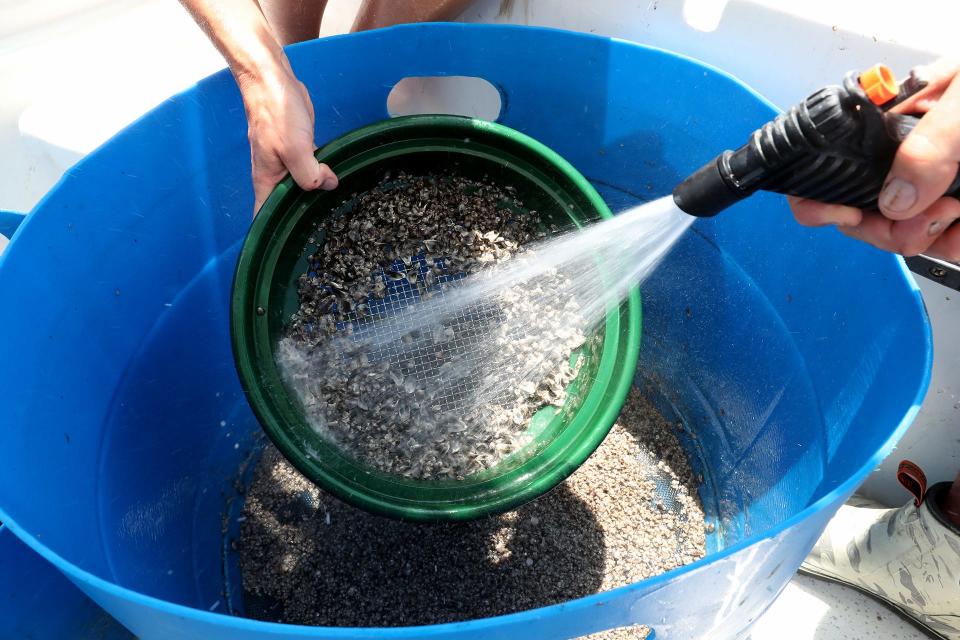
"For years we had a moratorium — you cannot use any equipment and everything had to be by hand," Bliss said. "If you have had local oysters, that has been picked by somebody at low tide by hand. It is very labor intensive and time consuming, but a great product for an oyster roast."
But in 2019, the state legislature passed laws allowing mariculture zones, and between then and about 2021 the CDR spent time studying other states' models and devising how to implement mariculture successfully in Georgia.
Georgia was the last state from Texas to Maine to legalize oyster mariculture.
Historically, Georgia's oyster season tends to close from around June 1 until October 1 because, during the summer months, harvested oysters are more likely to harbor a bacteria called vibrio which in intertidal zones — where oysters grow between the tide so they dry out at low tide — is affected by water temperatures. But methods like floating farms allow growers to produce oysters subtidally, meaning the oysters are always submerged.
The UGA Shellfish Research Laboratory is conducting research on vibrio in subtidal oysters demonstrating that in this growing method the bacteria can be mitigated. The lab received a National Sea Grant to study vibrio and has seen in its work that bacterial levels not only met safe standards but were further below the federal standards for the bacteria.
Nevertheless, Bliss said any growers looking to harvest during those summer months must go through additional rigorous permitting to ensure health and safety standards.
The Solomon family isn't the only producers in Georgia taking advantage of the new leases for mariculture, and within the next few years Bliss said coastal Georgians can look forward to seeing more local fare on their plates.
Marisa is an environmental journalist covering climate and the coast. She can be reached at mmecke@gannett.com.
This article originally appeared on Savannah Morning News: Georgia state leases for oyster farming bolster state mariculture

